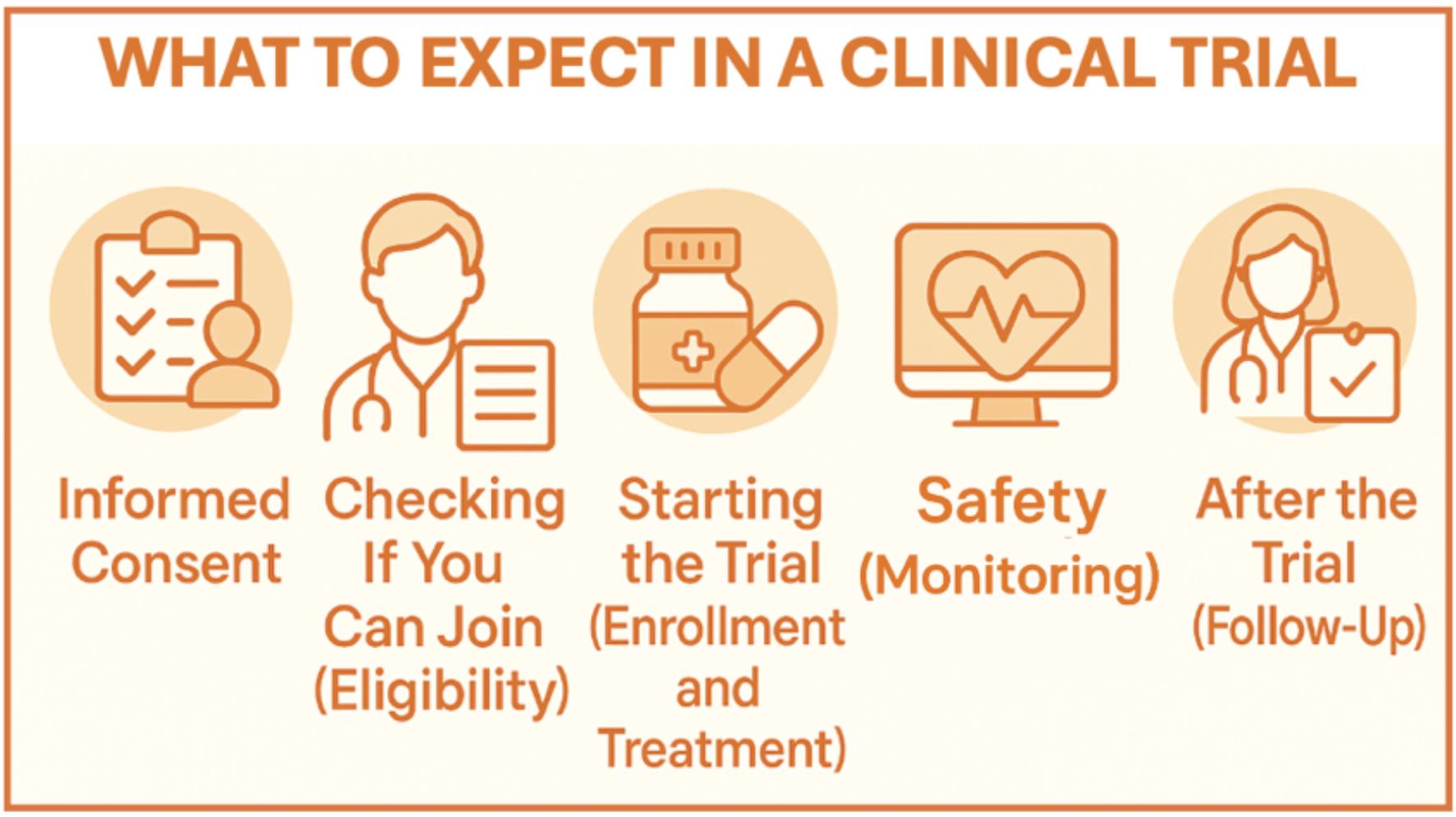Our Mission
Puma Biotechnology is a biopharmaceutical company dedicated to the acquisition, development, and commercialization of novel therapeutics for the treatment of cancer.

Clinical Trials
ALISCA™: ALISERTIB in CANCER
What to Expect in a Cancer Clinical Trial
If you or a loved one has cancer, you might hear the words clinical trial. But what does that really mean? And what happens if you decide to join one?
Let’s take a look at how clinical trials generally work and what you can expect if you're thinking about taking part.
What Is a Clinical Trial?
According to the National Cancer Institute’s (NCI) online Dictionary of Cancer Terms, a clinical trial is defined as a “type of research study that tests how well new medical approaches work in people.” 1
Doctors look to clinical trials to learn more about cancer and how to treat it. People join clinical trials to help test new treatments, like new cancer drugs or ways to reduce side effects. Clinical trials help doctors find out what works best—and what doesn't.

Step 1: Checking If You Can Join (Eligibility Criteria)
Before you join a clinical trial, your doctor and the research team needs to see if the trial is right for you. Every clinical trial has eligibility criteria. Eligibility criteria is a list of basic information that could include:
- The type or stage of cancer you have
- Being in a certain age range
- Treatments you’ve had before
- Your overall health and medical history
You’ll go through a screening process, which may include questions, blood tests, scans, or a physical exam. This is all part of making trials as safe as possible and deciding if it is a good treatment option for you. 2
Step 2: Learning the Details (Informed Consent)
If you are eligible and want to take part, the next step is called informed consent. This means the research team will:
- Explain what the trial is about
- Describe the treatment and what will happen
- Talk about possible risks and benefits
- Answer your questions
You’ll get all of this in writing too. If you decide to join, you’ll sign a form saying you understand and agree. But even after signing, it’s important to remember, you can leave the trial at any time. 3 Your participation is always voluntary.
Step 3: Starting the Trial (Enrollment and Treatment)
Once you begin the clinical trial, you might:
- Complete appointments for things like scans and blood tests
- Receive a new medication
- Try a new type of care to manage symptoms
You’ll have regular visits with the clinical trial team. They’ll check your health and watch for side effects. Some visits may take longer or happen more often than regular appointments. They might also ask questions about how you’re feeling.
Step 4: Staying Safe (Monitoring)
Patient safety is a priority. During a clinical trial, the clinical site team will typically:
- Watch for side effects
- Track how well the treatment is workingn
- Adjust the plan if needed
If you have any problems or want to stop, you can speak up at any time. The team is there to help you.
Step 5: After the Trial (Follow-Up)
When the trial ends—whether you finish it or choose to leave early—you’ll usually have a follow-up visit or two. This helps the team see how you’re doing, gather more information, and answer any questions you have.
Final Thoughts
Joining a cancer clinical trial is a big decision. It’s okay to have questions or feel unsure. You can click here to download Questions to Ask Your Oncologist – a document we created to help you talk to your doctor.
-
1
“Dictionary of Cancer Terms,” National Cancer Institute, May 16, 2024, https://www.cancer.gov/publications/dictionaries/cancer-terms/def/clinical-trial. Accessed on April 4, 2025
-
2
“Steps to Find a Clinical Trial,” National Cancer Institute, May 16, 2024, https://www.cancer.gov/research/participate/clinical-trials-search/steps. Accessed on April 7, 2025.
-
3
Shah P, Thornton I, Kopitnik NL, et al. Informed Consent. [Updated 2024 Nov 24]. In: StatPearls [Internet]. Treasure Island (FL): StatPearls Publishing; 2025 Jan-. Available from: https://www.ncbi.nlm.nih.gov/books/NBK430827/ Accessed April 4, 2025.
